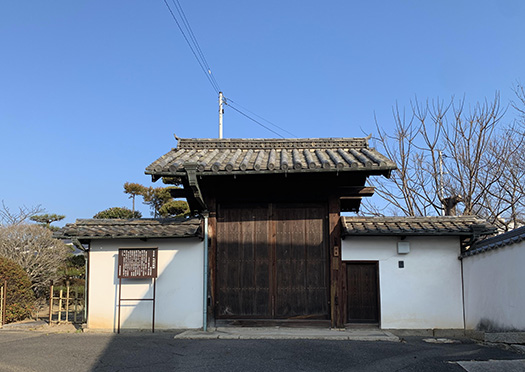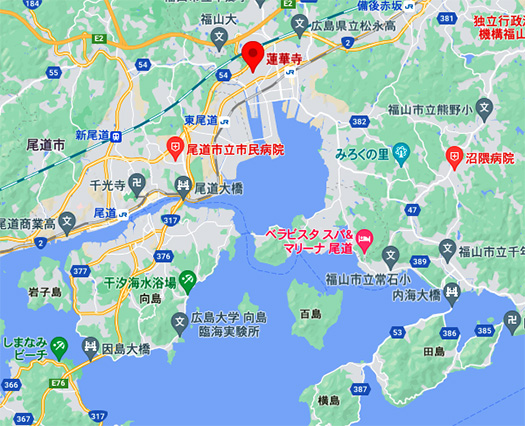


きのう、つい江戸期のわが家系のビジネス実態を書いてしまったのですが、
ブログで研究し始めるといろいろ探索もできるので少し深掘りしてみます。
なるべく「公知」が深まる方向にと思いますのでご容赦を。
上の図は西国街道の尾道と神辺の中間にあった「今津宿」本陣図面。
図面は平面図ですが、平屋で広大なグランド平面が確保されている様子がわかる。
江戸期の参勤交代は各藩にとってはたいへんな出費を強いられる制度。
たぶんすべての人員を旅宿に収容することは困難で歩兵クラスは野営だっただろう。
日本の各地に神社仏閣が広大な敷地で残っているのは
こういう「軍隊移動」の利便性という事情が反映しているのではないか。
今津でも「脇本陣」は蓮華寺が指定されている。
きのうに引き続き、九州の平戸藩主松浦静山が書いた「甲子夜話」引用。
〜安芸国をも出て、備後国三原の城をもあとになし、糸崎なる八幡の宮をふし拝み、
(中略)尾道の塩焼く浜の冬景色、煙もたえだえ心も慰まで、坂こえ行けば一里あまり、
今津村にいたりここにとまる。家は小高きところにて河本保平という庄屋なり。〜
尾道の塩焼きする浜辺を過ぎて1里あまりで今津に到着したと記載。
この「尾道−今津ー神辺」は現在の地図に即してGoogle Map「歩き」で見てみると
おおむね「国道2号線」沿線とわかる。国道は西国街道が初源なのでしょう。
行程は25.8kmだけれど尾道からは上り道がけっこう急激であることがわかる。
ただ尾道ー今津間は距離にして8-10km程度なので、参勤交代旅宿として
両方に泊まるか疑問で、たぶん計画段階で取捨選択したに違いない。
九州の島津家・薩摩藩77万石の場合、総移動距離は440里(1,700km)で
所要日程は40-60日とされ随員は1,880人という記録がある。
随員は多少は前後はしただろうけれど、格式・見栄重視の江戸社会では
大枠としての規模は維持していたと思える。
総費用は17,000両、両と円換算は公式研究はなく時代によっても違いがあるが、
「試算として1両を米価、賃金(大工手間賃)と比較すると米価は1両=約4万円、
賃金で1両=30~40万円。米価換算の1両価値は江戸初期で10万円、
中~後期で3-5万円、幕末頃は3-4千円になる」というWEB上の参考記述がある。
コメ生産基準経済が幕末では現実社会とミスマッチしていたことがうかがえる。
石高だけで各藩の経済運営をしていたのでは社会とのひずみは拡大する一方。
薩摩藩の総費用は大工手間換算では51億円と少しまともだが、
幕末米価換算では最小では5,100万円、これはありえないほど安いので、
実勢は大工手間換算が近いように思える。石高経済の破綻に襲われた各藩は
相当に懐具合が切迫していたことが明白。きのう書いたように、
本陣側としてはビジネスのコスパはよくなかったのではないか。
今津では幕末期に本陣・河本家とわが家系を含めた類縁が「打ち毀し」に遭遇する。
これはそれまでの社会制度維持が破綻したことを表現している。
武家の「見栄」重視に依拠した経済は初期はよかっただろうけれど、
徐々に儲からないビジネスになっていたのだろう。
English version⬇
[Economy of Daimyo Sankin-kotai Study of “Honjin” in the Edo period 2]
Yesterday, I wrote about the actual business situation of my family in the Edo period.
If you start researching on the blog, you can explore various things, so I will dig a little deeper.
Please forgive me because I think that “publicity” will deepen as much as possible.
The figure above is a drawing of the Honjin of “Imazujuku” located between Onomichi and Kannabe on the Saigoku Kaido.
The drawing is a plan view, but you can see how a vast ground plane is secured in a one-story building.
The change of attendance during the Edo period is a system that forces each clan to spend a lot of money.
Perhaps it was difficult to accommodate all personnel in the inn and the infantry class was camp.
The fact that shrines and temples remain on vast sites in various parts of Japan
It may reflect the convenience of such “army movement”.
Even in Imazu, “Wakihonjin” is designated as Renge-ji Temple.
Continuing from yesterday, a quote from “Kasshi Yawa” written by Seizan Matsuura, the lord of the Hirado feudal lord in Kyushu.
~ Leaving Aki Province, leaving the castle of Mihara, Bingo Province, and worshiping the shrine of Hatiman, Itosaki.
(Omitted) The winter scenery of the salt-grilled beach in Onomichi, the smoke, the heart and the comfort, if you go over the slope, it’s about a ri.
I went to Imazu village and stayed here. The house is a shoya called Hohei Kawamoto in a small high place. ~
It is stated that he arrived at Imazu in about a ri after passing the salt-grilled beach in Onomichi.
If you look at this “Onomichi-Imazu-Kannabe” on Google Map “Walk” according to the current map
It can be understood that it is generally along “National Highway No. 2”. The Saigoku Kaido is probably the first national highway.
The journey is 25.8km, but you can see that the uphill road is quite steep from Onomichi.
However, the distance between Onomichi and Imazu is about 8-10km, so as a substitute lodging for attendance.
I was wondering if I would stay in both, and I must have made a choice at the planning stage.
In the case of the Shimazu family and Satsuma domain of 770,000 stones in Kyushu, the total travel distance is 440 ri (1,700 km).
The required schedule is 40-60 days, and there is a record of 1,880 attendees.
The number of attendees may have changed a little, but in the Edo society where the emphasis is on formality and appearance.
It seems that the scale as a general framework was maintained.
The total cost is 17,000 cars, and there is no official research on both and yen conversion, but there are differences depending on the times,
“As a trial calculation, one car is the rice price, and when compared with the wage (carpenter’s labor wage), the rice price is one car = about 40,000 yen,
The wage is 1 car = 300,000-400,000 yen. The value of one car in terms of rice price is 100,000 yen in the early Edo period.
There is a reference description on the WEB that says, “It will be 30,000 to 50,000 yen in the middle to late period, and 3,000 to 4,000 yen by the end of the Edo period.”
It can be seen that the rice production standard economy was mismatched with the real world at the end of the Edo period.
If Kokudaka alone managed the economy of each clan, the distortion with society would only increase.
The total cost of the Satsuma domain is 5.1 billion yen in terms of carpenter’s labor, which is a little decent.
The minimum rice price conversion at the end of the Edo period is 51 million yen, which is unbelievably cheap.
The actual situation seems to be close to the carpenter’s labor conversion. Each clan that was hit by the collapse of the Kokudaka economy
It is clear that the condition of the pocket was very imminent. As I wrote yesterday
I think the cost performance of the business was not good for the main team.
In Imazu, at the end of the Tokugawa shogunate, the Honjin / Kawamoto family and their relatives, including my family, encounter a “destruction”.
This expresses that the maintenance of the social system up to that point has collapsed.
The economy that relied on the samurai’s emphasis on “appearance” would have been good at the beginning,
It would have gradually become a non-profitable business.
Posted on 2月 2nd, 2022 by 三木 奎吾
Filed under: こちら発行人です, 住宅マーケティング, 日本社会・文化研究







コメントを投稿
「※誹謗中傷や、悪意のある書き込み、営利目的などのコメントを防ぐために、投稿された全てのコメントは一時的に保留されますのでご了承ください。」
You must be logged in to post a comment.